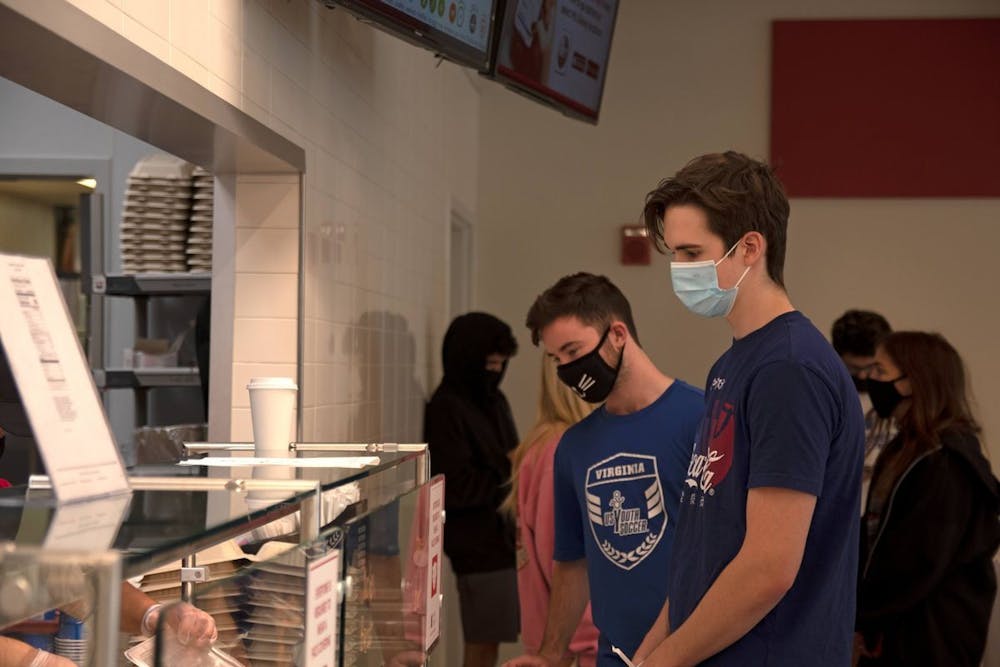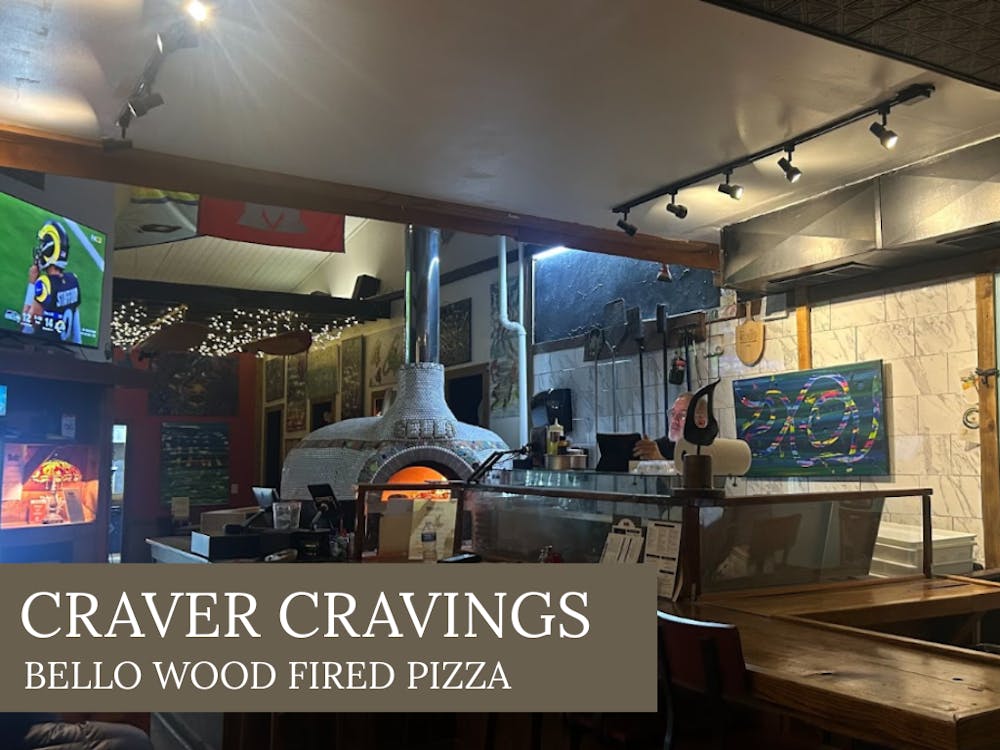From the outside, Maple Street Commons looks just like it has in previous years.
Students dine at the tables that dot the building’s red-brick exterior, and groups of hungry patrons stream in and out of the dining hall in twos and threes. Aside from the fact that these food-seekers are wearing masks, one could imagine that nothing unusual was going on inside the building.
One step inside the front door, however, and that notion is quickly dispelled.
In order to comply with COVID-19 protocols and ensure students stay safe when getting their grub, Miami’s dining halls look drastically different than they have in previous years.
Starting at the entrance, diners are greeted by an employee wearing a thick, plastic face shield and gloves. After swiping their card and entering the dining area, they can get food from five different stations, similar to how the dining hall has operated in the past.
However, instead of populating their plates buffet-style, students are required to tell employees which dishes they want and receive their food in disposable take-out boxes. This means that if a student wants food from each of the five stations, they could conceivably end up with a sizable stack of takeout containers to haul back to their table or dorm.
On top of this change, diners are also required to ask for a disposable paper cup each time they wish to get a refill at one of the hall’s drink fountains.
“Sometimes on my way out, I end up throwing away three or four boxes and two or three cups,” first-year Lauren Stezler said. “If I’m coming in here five times a week, that level of trash really adds up.”
While this system of takeout boxes and disposable cups makes it easier for diners to get their food to go, the dining halls across campus are still accommodating those who want to eat in, albeit at reduced numbers.
In Maple Street, tables are spaced at least six feet apart from one another, resulting in open, nearly-empty dining areas. The booths couldn’t be moved as easily as the tables, so instead, each booth has half of its seating area taped off so that only two diners can sit in a single booth.
Despite the fact that dining halls have had to significantly reduce their capacity for in-house eating, Geno Svec, Miami’s executive director of campus services, said it hasn’t been too much of an issue.
“No one is turned away at the [dining] locations,” Svec said. “If the dining tables are full, then we provide the option to take your food to go. Currently, we have not reached capacity at any location even with the limited amount of seating.”
Enjoy what you're reading?
Signup for our newsletter
Svec said dining services has focused mainly on making takeout a more accessible and appealing option to encourage less congregation of students and more social distancing.
Some Miamians are less than thrilled about the changes to their eatery options, however.
Sophomore Kasey Dalton said he’s upset about the loss of a place to gather with his friends.
“I get that we can’t gather in large groups and be safe about it, but it’s a bummer that eating [at dining halls] is so ... rigid now,” Dalton said. “Instead of something enjoyable, eating here is just something I do out of habit at this point.”
Svec addressed those issues, stating that concerns over student safety had to take priority over making dining a social experience this year.
“Unfortunately, a lot has changed this year,” Svec said. “We aren’t seeing the large groups of students coming in to gather … We simply would not be able to accommodate [it].”
Around dinner time last Friday, the changes to Maple Street and their effects on students’ dining experience were on full display. Students eating alone or in small groups lightly populated the dining room.
The relatively small number of students roaming the sparse, spaced-out rooms made the building feel emptier than it ever has in years past.
Students toted bags full of cardboard-takeout boxes back to their dorms in greater numbers than those who elected to sit down and eat in-house. In every area of the eatery, the sounds of student conversation and socialization were muted and, in some rooms, missing altogether.
“[That’s] just the way it has to be,” Stezler said. “Everything is different this year, so of course dining halls are going to feel different too.”




